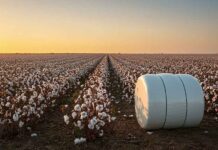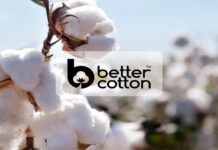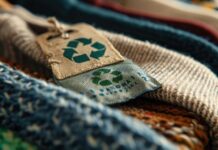Recent research led by Penn State scholars, published in the Proceedings of the National Academy of Sciences, indicates that fermentation byproducts could play a vital role in tackling two significant global challenges: food insecurity and the negative environmental impacts of fast fashion. The leftover yeast generated from brewing beer, wine, or pharmaceuticals can be converted into sustainable fashion fibers that are stronger than many natural fibers while minimizing environmental harm.
Typically considered waste, the yeast biomass—comprising proteins, lipids, and sugars—leftover from alcohol and pharmaceutical manufacturing has been recognized by researchers as a valuable resource. Lead author Melik Demirel, a Pearce professor of Engineering and Huck Chair in Biomimetic Materials at Penn State, noted that his team discovered the potential to transform this material into fibers through a previously developed production method. They achieved successful pilot-scale production of over 1,000 pounds of these fibers at a facility in Germany, sustaining continuous and batch production for over 100 hours.
Utilizing data gathered during this process, the team conducted a lifecycle assessment to evaluate the product’s economic viability, considering everything from raw material acquisition to lifecycle impact and disposal. The analysis included metrics such as cost, water usage, production output, and greenhouse gas emissions at each stage. Ultimately, the findings revealed that fermentation byproduct fibers could compete with traditional fibers like wool in the marketplace, requiring significantly fewer resources—especially land—even when factoring in the agricultural crops needed to produce the yeast biomass.
“Just like hunter-gatherers domesticated sheep for wool 11,000 years ago, we are now domesticating yeast to create fibers that could redirect agricultural resources to food crops,” Demirel stated.
The research indicates that these fibers can be produced at a competitive cost of under $6 per kilogram, compared to wool’s price of $10 to $12 per kilogram. Remarkably, this process consumes far less water and land, while significantly enhancing performance compared to any other natural or synthetic fibers, nearly eliminating greenhouse gas emissions. The resources saved could instead be redirected towards growing food crops.
Demirel’s team has dedicated over a decade to perfecting a method for extracting fibers from proteins, drawing inspiration from natural processes. The resulting fiber is not only durable but also devoid of the hazardous chemicals that can linger in the environment.
“We extract the proteins as aggregates—mimicking natural protein formations known as amyloids—from the yeast and dissolve the pulp in a solution, which is then pushed through a spinneret creating continuous fibers,” Demirel explained. The fibers undergo washing, drying, and spinning into yarn, which can then be woven into fabric. Additionally, these fibers are biodegradable, meaning they will decompose after disposal, unlike the millions of tons of polyester garments that constitute a significant portion of environmental pollution. “The key to our process lies in the solvent used to dissolve the pulp—this solvent is similar to that used in producing Lyocell from wood pulp. We recover 99.6% of the solvent for recycling in future production cycles.”
The idea of producing fibers from proteins is not new; Demirel cites examples such as Lanital, a fiber developed in the 1930s from milk protein that lost popularity due to its inferior strength compared to polyester. “Performance and cost have always been the main challenges,” Demirel noted, recalling the mid-20th century inventions of fibers from peanut and corn proteins that, ultimately, were overshadowed by the emergence of accessible and robust polyester.
Beyond fiber quality, the research also suggests strong commercial viability for fermentation byproduct fibers. The pilot-scale data was used to simulate scenarios for commercial production. For comparison, approximately 55 million pounds of cotton are harvested globally each year, with just 2.2 pounds needed for a T-shirt and jeans consuming up to 2,642 gallons of water. While the raw cotton is relatively inexpensive, the environmental costs are considerable.
“Cotton farming utilizes approximately 88 million acres globally—nearly 40% situated in India, which faces serious hunger concerns,” Demirel mentioned. “Envision the potential if that land and the associated resources could be redirected toward food production instead of cotton. While the transition is complex, our analysis shows that biomanufactured fibers require markedly less land, water, and other resources, suggesting that a shift away from crop-based fibers could release substantial agricultural resources for food production.”
With around 733 million people—about one in twelve—experiencing food insecurity in 2024, the United Nations has aimed for ‘Zero Hunger’ by 2030. An effective solution may reside in repurposing land currently designated for fiber crops to grow food crops. Demirel stresses that existing production methods consume vast resources, and over 66% of apparel made annually in the U.S. is discarded, ending up in landfills. His approach proposes to address both issues simultaneously.
“By utilizing biomanufacturing, we can create sustainable, high-performance fibers without competing for land, water, or nutrients needed to grow food crops,” he explained. “Adopting biomanufactured protein fibers would mark a monumental advancement towards a future where our fiber demands are met without jeopardizing the planet’s ability to feed its burgeoning population. Such a transition would help us make measurable progress towards achieving the ‘Zero Hunger’ goal, guaranteeing access to nutritious food while fostering sustainable development.”
Demirel’s team is committed to further exploring the commercial viability of fermentation byproduct fibers as they advance this innovative solution.



































